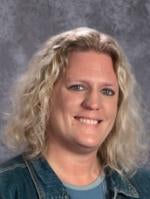School leaders working on next certification under High Reliability Schools framework
Published 6:14 am Tuesday, February 7, 2023
|
Getting your Trinity Audio player ready...
|
Albert Lea school board members listened to an update on the district’s goal of achieving level two certification ensuring High Reliability Schools during Monday night’s study session.
To that effect, Tonya Franks, principal at Halverson Elementary School, along with Chris Dibble, Nicki Severtson and Johanna Thomas attended a High Reliability Schools summit last week in Texas.
Franks stressed the level two work needed to be done to certify a school, and there were six leading indicators.
Indicator 2.1 focused on school leaders communicating a clear vision for how instruction should be addressed in schools.
One example of that was the instructional framework.
“In each of our buildings we work with our leadership teams to identify what our priority areas are within the [Marzano teacher evaluation model] elements,” she said. “Walk-throughs was an opportunity for administrators to provide feedback to what effective instruction looks like in our classrooms.”
The second indicator looked at teachers having support to improve their pedagogical skills through reflection and growth plans.
“We have been doing this work before High Reliability skills language came to our district,” she said. “It became part of the work of alternative teacher pay system when our teachers started doing individual growth plans.”
According to Franks, all licensed staff worked on their individual growth plans and every building had instructional coaches and resource specialists, along with collaborative teams. The district has also worked to strengthen their teacher mentorship program.
Indicator 2.3, having known and monitored predominant instructional practices throughout the school, looked at what happened daily in classrooms.
“What are we working on, what do we identify as those essential skills that we want our students to learn and master?” she said.
The third indicator also included professional growth goals and instructional rounds where teachers observed each other.
Indicator 2.4 included administrative work where teachers were provided clear and ongoing evaluations of their pedagogical strengths and weaknesses. Within that administrative lens are formal evaluations from administrators, student engagement surveys and administrative walkthroughs.
“Administrative walkthroughs are not evaluative, they are feedback driven,” Franks said.
Indicator 2.5 included teachers being provided with job-embedded professional development related to their instructional growth goals.
Indicator 2.6 looked at ensuring teachers had opportunities to observe and discuss effective teaching. Those included new teacher observations, instructional rounds and work with professional communities, collaborative teams and department meetings, something happening at each building in the district.
Franks then identified action items, which included continually looking at research-based strategies that could be implemented in the classroom, using common language, identifying effective instructional strategies, expanding professional development opportunities and developing a new evaluation model.
“It’s important for us, if we are living and breathing that High Reliability Schools work, it’s important for us to also live and breathe that within the feedback evaluations that we give to teachers,” she said. “We know that will be an action item in the very near future.”
Currently, each building in the district has been certified at level one, and none have started the process for level two certification.
“As you move through the High Reliability Schools process, you have to … prove or improve,” Franks said. “So even as you move through the levels of High Reliability Schools, you have to continue to prove that your school or your district is maintaining that level of expertise. So safe, supportive, collaborative culture is where we’re currently all certified at, but we’re all always working there.”
The board also passed a memorandum of understanding with the Albert Lea Administrative Association allowing Franks to be assigned as an administrator on special assignments effective Feb. 7. Franks will be transitioning from Halverson principal to interim director of teaching and learning. Kim Larson, currently dean of students at Southwest Middle School, will take over as principal at Halverson.
In Halverson Happenings, the school newsletter that went out Tuesday morning, Franks said she was humbled by the opportunity to help students at the district level. Larson noted she looked forward to working at Halverson and connecting, inspiring and motivating students, staff and family.







